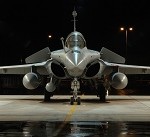In an effort to dismiss any talk of compromising on defence, the Budget for 2013-2014 has increased India’s Defence Budget by 5% from last year to Rs. 2,03,672 crores ($42.5 billion). This includes Rs. 86, 741 crores ($16 billion) on arms acquisitions which is a hike of 9% over last year. Even as this will ensure India remains a leading arms importer, it will be a welcome relief if these purchases are not tainted by allegations of corruption.
Reports from the ‘Choppergate’ scandal indicate that middlemen were paid about Rs. 162 crores ($30million) to swing the decision in AgustaWestland’s favour.
This is worth about 4% of the Rs. 3,700 crores ($750 million) deal. A quick calculation reveals that if the rate of commission remains constant, middlemen stand to make Rs. 215 crores ($40 million) for every Rs. 5, 375 crores ($1 billion) worth of Indian arms acquisitions. In other words, though the new budget worth Rs. 86, 741 crores may be spread across different deals, it can still potentially net middlemen a commission of Rs. 3,440 crores ($640 million). In a nation of 1.2 billion citizens, that amounts to each citizen sharing a burden of about Rs. 20 ($0.5) for these commissions.
What can Rs. 3, 440 crores buy? A Russian nuclear-attack submarine on lease for a decade, or 10 fighter aircraft, or three additional public sector banks similar to Mr Chidambaram’s Women’s Bank each with an initial corpus of Rs. 1, 000 crores. India’s per capita GDP is Rs. 75,000 ($1500) per annum and Rs. 3,440 crores represents the average wage earnings of nearly five lakh Indians – the population of Jammu city.
We have reason to worry. India accounts for between 9 to 10% of the world’s armsimports and this trend will continue. According to a 2010 CII-Deloitte report, India is expected to spend almost Rs. 430,000 crores ($80 billion) on arms acquisitions over the next five years. A 4% commission on this amount can be expected to fetch commissions of Rs. 17,200 crores ($3.2 billion). Per capita, that represents the earnings of nearly 2.3 million Indians – the population of Nagpur or the total GDP of Eritrea.
Allegations of corruption stall the acquisition process, delay weapons induction and erode national security. As India continues its no-compromise policy on defence budget allocation, we must also pursue a no-compromise policy on bribery. As we hike our arms acquisition budgets, we must also conform to global practice and consider legalizing above board payments for professional services rendered by qualified agents.
Aakash Brahmachari is a summer associate at Gateway House
This blog was exclusively written for Gateway House: Indian Council on Global Relations. You can read more exclusive content here.
For interview requests with the author, or for permission to republish, please contact outreach@gatewayhouse.in.
© Copyright 2012 Gateway House: Indian Council on Global Relations. All rights reserved. Any unauthorized copying or reproduction is strictly prohibited


